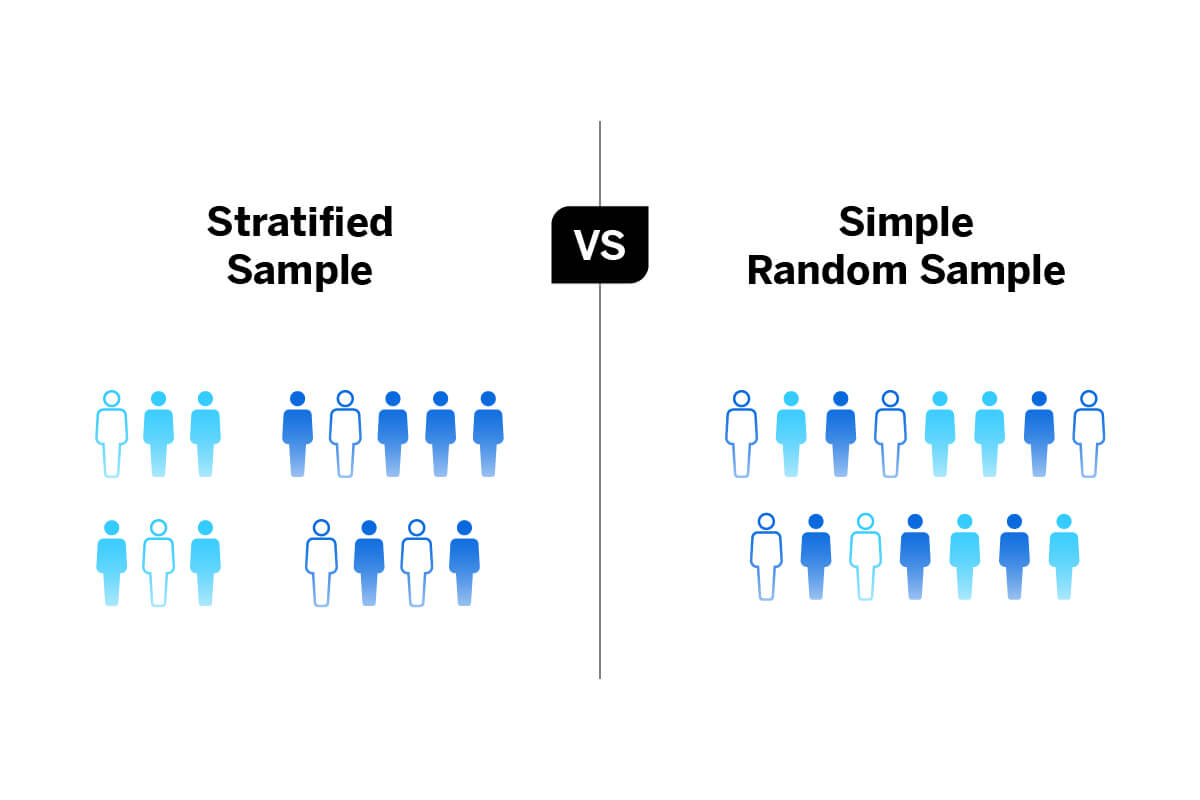
How to use stratified random sampling to your advantage (2023)
Stratified sampling. In statistics, stratified sampling is a method of sampling from a population which can be partitioned into subpopulations . Stratified sampling example. In statistical surveys, when subpopulations within an overall population vary, it could be advantageous to sample each subpopulation ( stratum) independently.

Pin on EPIDEMIOLOGY
In stratified random sampling, a chance process (e.g., a random number generator) is used to select individuals, whereas in stratified systematic sampling an objective, orderly procedure is applied to choose individuals (e.g., listing all of the students within each major alphabetically and choosing every 10th case). Browse Dictionary

PPT SAMPLING METHODS PowerPoint Presentation ID587453
Stratified sampling is a method of sampling that involves dividing a population into homogeneous subgroups or 'strata', and then randomly selecting individuals from each group for study. The process of classifying the population into groups before sampling is called stratification.
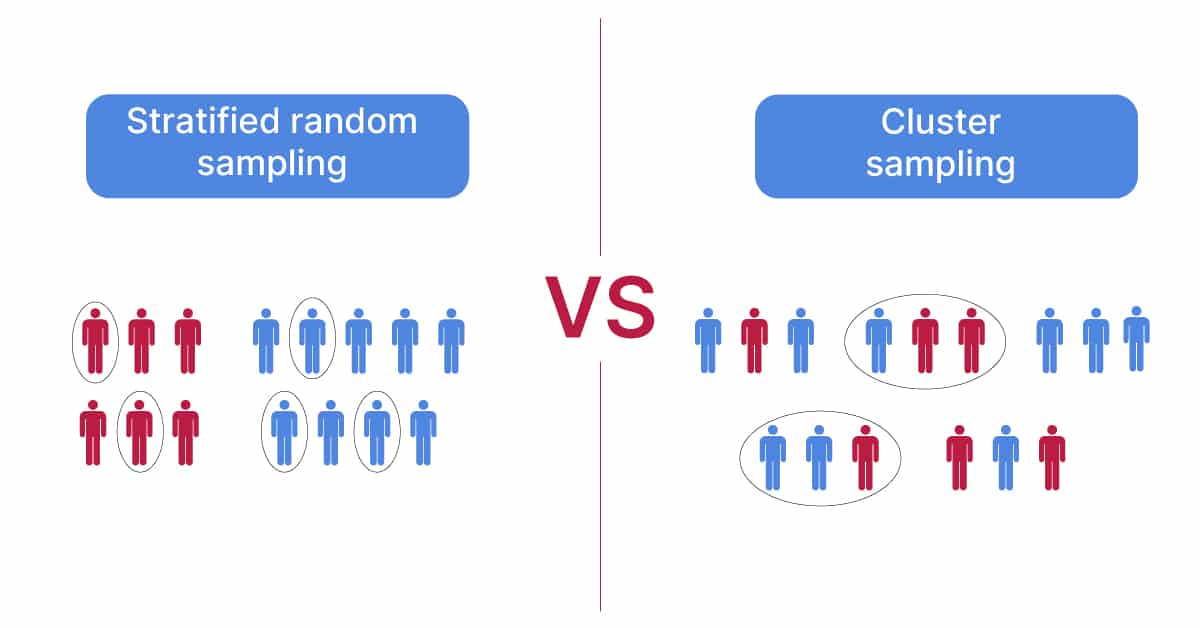
Stratified Sampling Vs Cluster Sampling Voxco
Oliver C. Robinson University of Greenwich, Department of Psychology and Counselling, London, UK Correspondence [email protected]. Pages 25-41 | Published online: 18 Nov 2013.. such as random sampling, convenience sampling, stratified sampling, cell sampling, quota sampling or a single-case selection strategy; and (4).
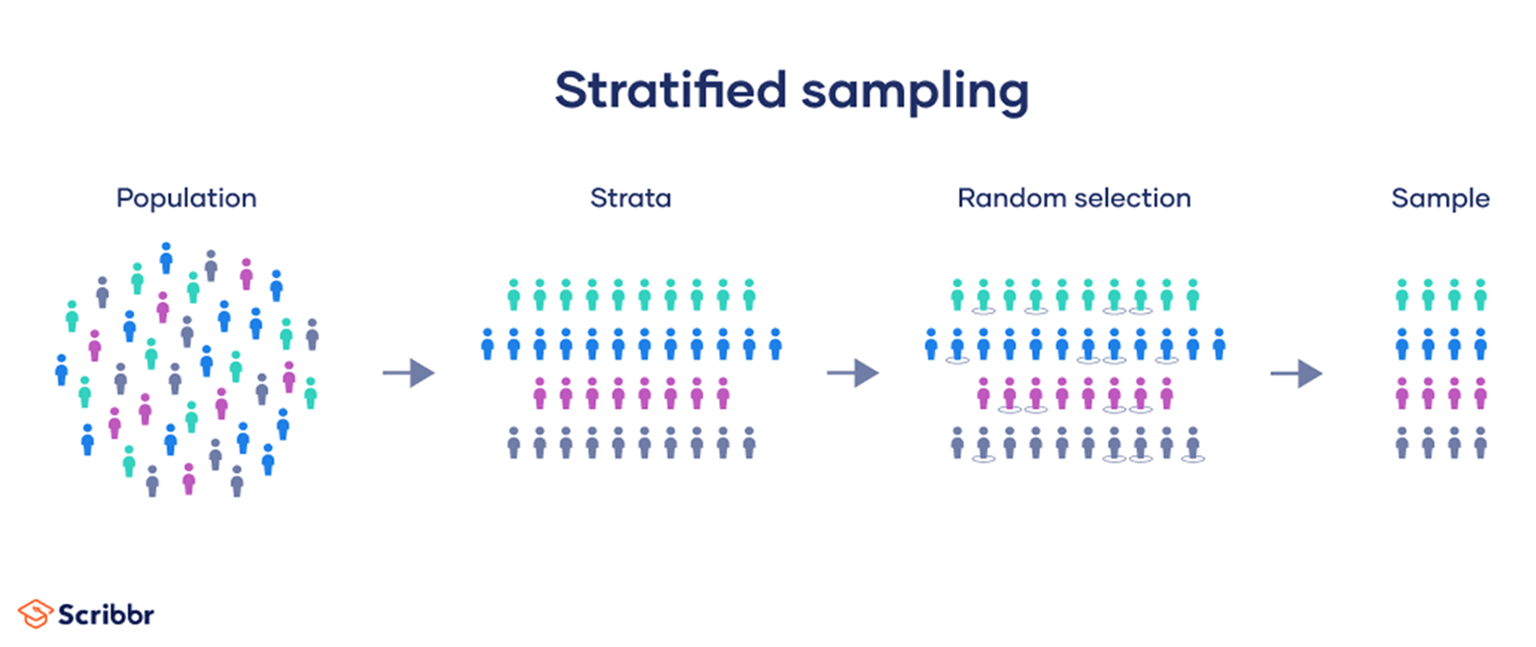
Stratified Sampling Definition, Guide & Examples
Stratified sampling is the best choice among the probability sampling methods when you believe that subgroups will have different mean values for the variable (s) you're studying. It has several potential advantages: Ensuring the diversity of your sample
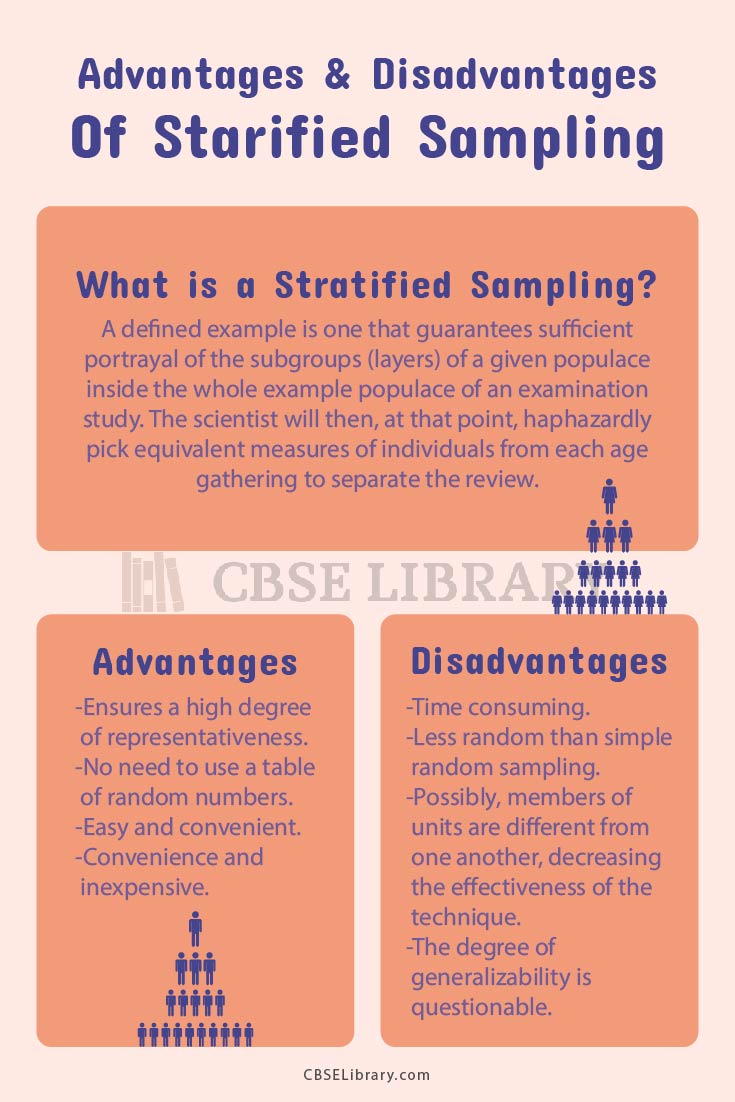
Stratified Sampling Advantages And Disadvantages Limitations and Benefits, Pros and Cons of
Stratified sampling is a sampling technique where the researcher divides or 'stratifies' the target group into sections, each representing a key group (or characteristic) that should be present in the final sample.For example, if a class has 20 students, 18 male and 2 female, and a researcher wanted a sample of 10, the sample would consist of 9.

Description Stratified sampling example, vector illustration diagram. Research method
7.1 Probability versus Non-Probability Sampling. Essentially all psychological research involves sampling—selecting a sample to study from the population of interest. Sampling falls into two broad categories. Probability sampling occurs when the researcher can specify the probability that each member of the population will be selected for the.

Stratified Sampling Vs Cluster Sampling with Examples Meaning and Comparison YouTube
A stratified sample is one that ensures that subgroups (strata) of a given population are each adequately represented within the whole sample population of a research study. For example, one might divide a sample of adults into subgroups by age, like 18-29, 30-39, 40-49, 50-59, and 60 and above. To stratify this sample, the researcher.
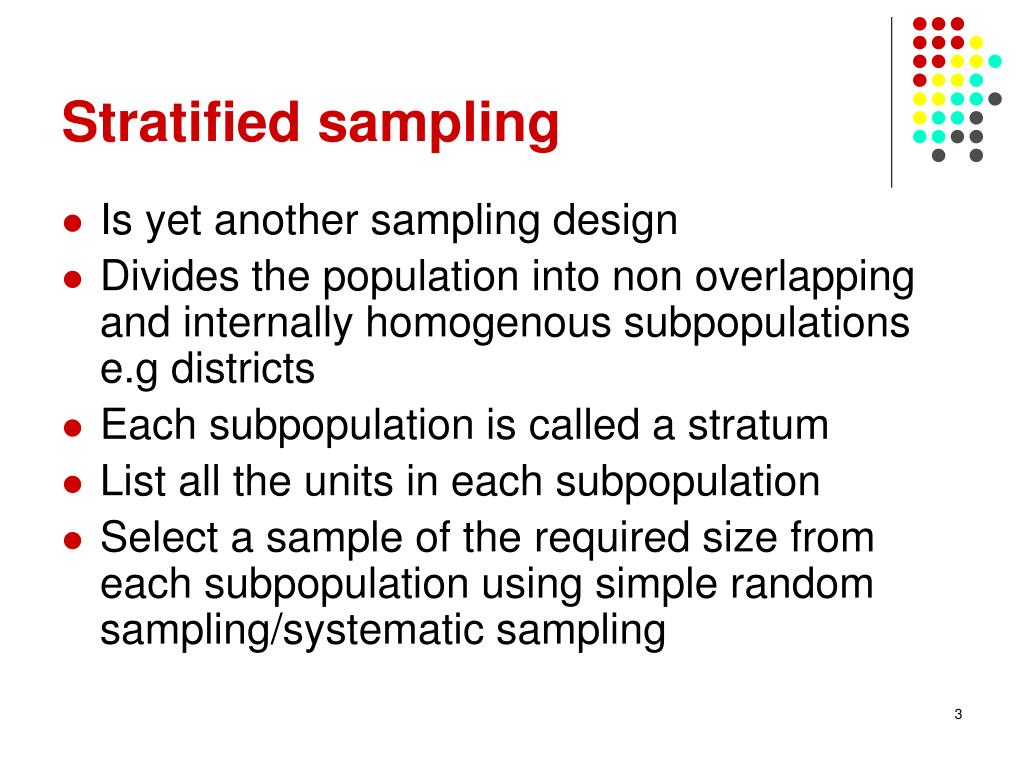
PPT Stratified Sampling PowerPoint Presentation, free download ID6015867
Stratified Sampling Here the sampler divides or 'stratifies' the target group into sections, each showing a key characteristic which should be present in the final sample. Then each of those sections is sampled individually.

Cluster Sampling vs. Stratified Sampling What's the Difference?
Stratified random sampling is a method of sampling that involves the division of a population into smaller subgroups known as strata. In stratified random sampling, or stratification, the.
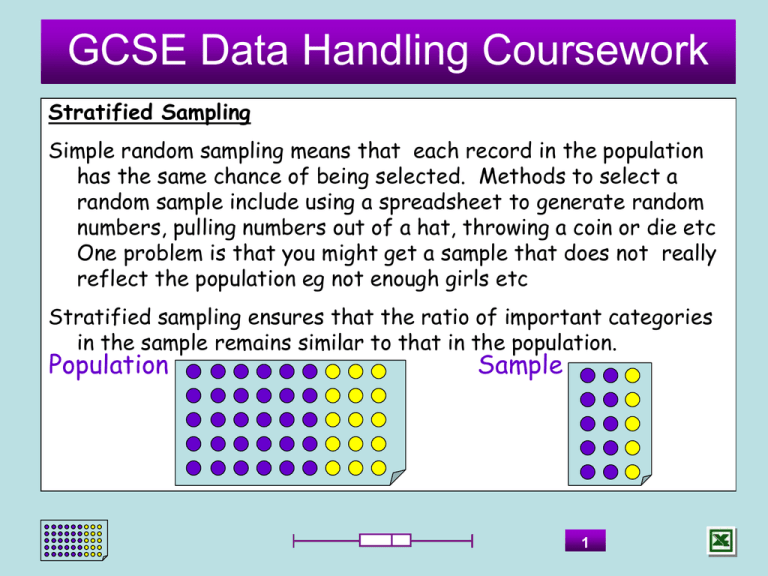
Stratified Sampling
Stratified sampling is a method of obtaining a representative sample from a population that researchers have divided into relatively similar subpopulations (strata). Researchers use stratified sampling to ensure specific subgroups are present in their sample. It also helps them obtain precise estimates of each group's characteristics.

Stratified sampling Variation Theory
It's like stratified sampling, but without random selection within each stratum. Non-probability sampling means that researchers subjectively choose the sample instead of random selection, so not all population members have an equal chance of participating.

Stratified Sampling Example Vector Illustration Diagram
Convenience sampling (also known as opportunity sampling or grab sampling) is one of the most common methods to get participants for surveys or research studies. It is a non-probability sampling method. "This means that a researcher collects data from the most convenient sample available," explains Dr. Hong-hui Lin, Clinical Psychologist.

3.3. Stratified Sampling YouTube
Stratified random sampling involves separating the population into subgroups and then taking a simple random sample from each of these subgroups. For example, researchers may divide the population into subgroups based on race, sex, or age, and then take a simple random sample of each of these groups.
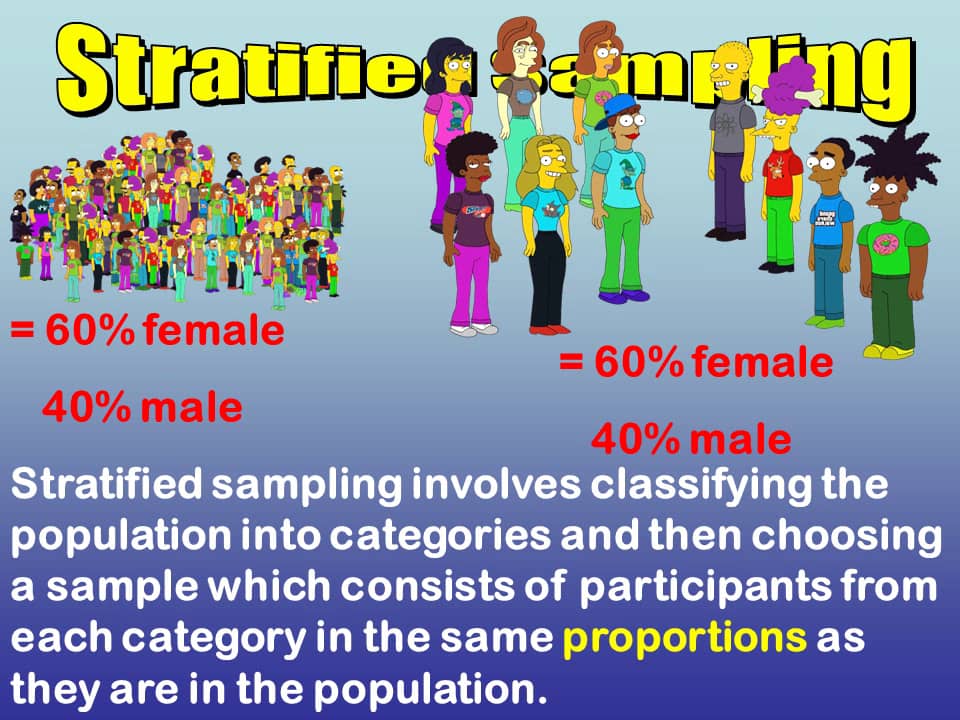
Sampling AO1 AO2 AO3 PSYCHOLOGY WIZARD
Stratified random sampling allows researchers to obtain a sample population that best represents the entire population being studied by dividing it into subgroups called strata. This method of.

PPT Sampling PowerPoint Presentation, free download ID2419622
Cluster sampling and stratified sampling are two sampling methods that break up populations into smaller groups and take samples based on those groups.. Practical Psychology began as a collection of study material for psychology students in 2016, created by a student in the field. It has since evolved into an online blog and YouTube channel.